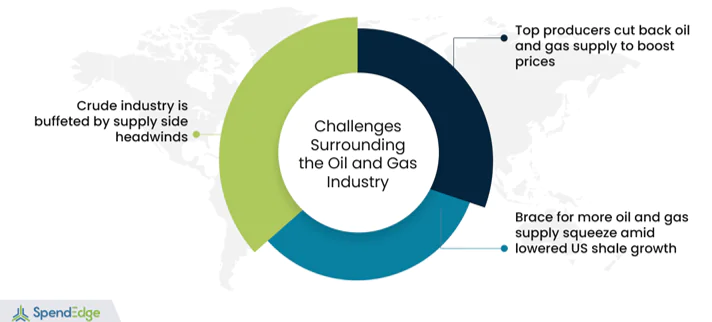By: Srinivas R
Crude oil prices are rallying to new highs after wavering near $66 per barrel earlier this year. In any case, prices are back on track, with Brent crude trading at $86 per barrel this week. Macroeconomic headwinds (read high inflation, subdued oil and gas supply and demand, mild drop in Chinese and Indian crude imports) that just don’t seem to go away and a deepening manufacturing slump in Russia and Saudi Arabia are propping up crude indices by putting a squeeze on supplies. Across regions, refineries have posted strong margins. However, the upward price pressures send a worrying message to market participants in downstream industries. Meanwhile, US motorists guzzled 5x more gas in the week ended August 25, 2023, over the previous week, indicative of a resilient domestic market. Besides, the US strategic petroleum reserve (SPR) is at a 40-year-low. Uncertain clouds hang over US shale production, which is in dire need of significant capital investment if it is to crank up more volumes, and this is complicating fuel supplies even more. Unplanned maintenance is also holding up US shale output. So, overall, gas and oil supply will likely dip marginally in 2023 third quarter.
Crude industry is buffeted by supply side headwinds
Global demand for oil and gas was projected to rise by 2.4 mb/d in the current year, but the rate of growth, as humanity approaches the end of the decade, is uncertain. A convergence of factors is slowing the world’s oil and gas supplies, including lowered forecasts for Europe and Asia and the pivot toward green energy. On the supply side, the US, Brazil, Norway, Kazakhstan, and Guyana were driving oil and gas supply. Meanwhile Russia, the second largest exporter behind Saudi Arabia, plans to cut oil exports by 300,000 barrels a day in September to shore up declining oil prices worldwide. Saudi Arabia was expected to follow suit. On the back of production cuts, oil prices have since been inching upward from around $76 a barrel in early July to above $83 now.
Top producers cut back oil and gas supply to boost prices
In December 2022, the West adopted a framework to ensure crude oils, petroleum oils, and bituminous mineral oil originating in or exported from Russia to third countries are traded at a capped price of $60 per barrel. The aim was to reduce Russia’s revenue and kneecap the country’s war financing in Ukraine, maintain steady supplies of Russian crude to worldwide markets, and contain price inflations. However, Russian crude was trading below $60 a barrel even before the price cap went into effect. Inflationary pressure and high interest rates announced by central banks to tame it, slowing factory activities in China, and the generally grim and choppy nature of Western markets have depressed oil prices globally. Even so, export cuts have now propped up prices, at least for now.
Brace for more oil and gas supply squeeze amid lowered US shale growth
Uncertainties around US shale oil output in the major “shale plays” in the country threaten to tighten already squeezed oil and gas supply. The slump in US shale throughput is reckoned to be around 9.4 mb/d in September 2023. Importantly, this is happening for the second straight month this year, and the slump due next month is considered the lowest since May 2023. On one hand, rising costs, tightening labor markets, and sliding oil and gas prices put a brake on new well production, as in July 2023. Meanwhile, decline in oil and gas supply from legacy wells in seven large shale formation continues and new wells are in no position to balance this out.
Top Challenges around the Oil and Gas Industry

Transform supply chains with more proactive sourcing
At SpendEdge, our experts help clients frame a robust sourcing strategy with cost minimization and risk mitigations as its lynchpins. We help clients establish milestones to ensure satisfactory progress toward predefined goals. For instance, our strategic sourcing approach is enabling clients to get the most value out of their oil and gas supply base.
Build certainty in times of uncertain demand
With more than two decades of experience under their belt, our experts have a crystal-clear view of the demand cycles within specific industries. With a laser-focused understanding of the downstream dynamic, such as, of sectors like crude oil refining, purification, and processing, we help clients discover the right oil and gas supply sources to bring noticeable bottom-line benefits to the client organization.
Discover alternative country sources, de-risk the supply base
On the back of our expert insights, businesses, including in the crude oil sector, have inked successful deals with oil and gas supply sources in alternative country markets to significantly improve savings, mitigate risks, and boost environmental, social, and governance (ESG) scores.
Embrace the unpredictable with broad-spectrum risk management
Building out the most efficient risk management strategy is critical for any business to reduce or contain the impact of risks. No matter what dimension of risk (strategic, compliance, financial, operational), our team of experts can assist businesses in developing actionable risk management plans to assess, mitigate, monitor, and report them before they can hit the supply chain.
Success story: In these uncertain times, a manufacturer of crude oil derivatives finds merit in a dual sourcing approach
Our client is a leading North American manufacturer of packaging solutions, serving a diversified client base across multiple locations in the US and Canada. Leveraging more than 50 production facilities and worldwide sales teams, the company supports industries ranging from aerospace and automotive to real estate, ecommerce, food, and beverages. The product portfolio includes shrink wraps, stretch films, and protective packaging made from polyvinyl chloride (PVC), polyethylene (PE), and polyolefin (POF), all critically dependent on oil and gas supply.
As a polymer manufacturer, our client is hugely reliant on crude-oil derived raw materials like ethylene and propylene. Prices of some raw materials like polyethylene and polypropylene had reached an all-time high. Ongoing oil and gas supply issues are a major concern for the client. Some key input materials originate in Russia and Ukraine, and diminished supplies from both countries, because of the ongoing conflict and sanctions slapped on Russia, threaten to tighten the client’s supply chain. Besides, many other industries are chasing the same already-scarce raw materials. On the other hand, the client has a growing backlog of customer orders to meet. Moreover, the client was looking to pivot away from its age-old single sourcing strategy, which has worked in the past, to make the procurement process more predictable. But with uncertain clouds looming over the gas and oil supply side, the risks associated with single sourcing far outweigh any of the tangible benefits the client can hope to derive from this approach. The inability of a single supplier to fend off price inflations and chronic shortage of key raw materials could have a ripple effect on the supply chain, and the resulting production delays might prove costly for the client by way of revenue loss and reputational damage. Certainly, dual sourcing is an option for the client, but before taking the plunge, the client wanted to compare the efforts involved and the potential gains from such a strategy pivot. In early 2022, the client roped in our experts to develop an in-depth understanding of the unfolding scenarios on the global crude production landscape and their potential impact on the client’s business, specifically in terms of risks and costs.
Our experts worked on the project double quick and were able to report key insights from the crude oil market to the client, along with workable recommendations. Our study, covering the period 2022-2028, included data from a broad spectrum of activities in the dynamically evolving global oil and gas sector. Historical crude oil price movements and projections, the oil and gas supply and demand dynamic, data on product markets and refining operations, and downstream effect of crude prices on raw material prices formed part of our study. Based on our study, the client is in the process of firming up a dual sourcing strategy in the near-to-mid term to lower risks without compromising on quality and product consistency.

Contact us now to solve your procurement problems!
Author’s Details
Srinivas R
Associate Vice President, Sourcing and Procurement Intelligence
Srinivas is a solution design specialist at Infiniti Research and provides advisory services to clients across the medical devices, pharmaceutical, CPG & FMCG, energy, and ICT sectors. He specializes in the procurement areas of industry benchmarking, cost modeling, rate card benchmarking, negotiation advisory, and supplier intelligence.




